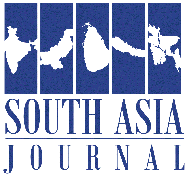 As India turned its focus westward to confront Pakistan after a deadly terrorist attack in Kashmir, China subtly reaffirmed its territorial claims along the contested border in India’s northeastern region.
As India turned its focus westward to confront Pakistan after a deadly terrorist attack in Kashmir, China subtly reaffirmed its territorial claims along the contested border in India’s northeastern region.
On 14 May, China released a new list of names for 27 locations in India’s Arunachal Pradesh in an ostensibly bureaucratic but unmistakably calculated move. China explained that the list included “standardised” names of places that were entirely within its sovereignty. However, India has sharply rejected the claims, emphasising that Arunachal Pradesh is an integral part of its territory.
China’s (re)naming of places is not merely a cartographic exercise but instead a part of Beijing’s wider approach of using symbolic assertion in territorial disputes. Essentially, by assigning Chinese names to places in Arunachal Pradesh, it seeks to legitimise the contested claims and challenge India’s administration of the area.
China’s recent move comes despite bilateral efforts over the past year to improve ties, in the aftermath of the worst flare-up of tensions in four decades. In 2020, a violent border clash took place in the Galwan valley region in Eastern Ladakh, which was also a key site of the 1962 Sino-Indian war. While smaller skirmishes had occurred intermittently since 2013, this marked the first deadly confrontation between the two sides in decades. Relations soured and resulted in a military standoff at the border that lasted more than four years.
The recent symbolic assertions, coming on the heels of discernible attempts at rapprochement, underscore the limits of diplomacy in a relationship that is evidently marked by deep mistrust.
In response to the Galwan Valley incident, Delhi quickly deployed more military personnel along the Line of Actual Control (LAC), the de-facto border, and initiated targeted infrastructure development projects to enhance defensive capabilities. It also made attempts to decouple from Beijing across other fronts, including banning several Chinese apps, tightening regulations on investments, and effectively suspending people-to-people engagements. Diplomatic ties suffered. China’s President Xi Jinping skipped the 2023 G20 Summit held in India.
Shortly after the Galwan violence, both sides began a series of political and military negotiations. Despite over 20 rounds of bilateral engagements, it wasn’t until October 2024 – more than four years after the clash – that the two sides announced a border agreement. And since then, there have been tentative but promising signs of a stabilisation in ties.
Diplomatic engagements have resumed, the first of which was a meeting between Xi and Indian Prime Minister Narendra Modi on the sidelines of the BRICS summit in Russia, just a few days after the end of the military standoff. Subsequently, there have been meetings between the two countries’ foreign ministers (November and February) and defence ministers (November), as well as a visit by India’s foreign secretary to Beijing in January. There is also cautious optimism regarding an improvement in economic and business engagements.
Amid this progress, Beijing’s renewed territorial assertions serve as a sobering reminder of the underlying challenges.
Indeed, the recent renaming exercise is not Beijing’s first attempt at redrawing the map. It is part of a series of similar actions, with previous efforts occurring in 2017, 2021, 2023 and 2024. A similar pattern can also be observed in the South China Sea, where China has been accused of renaming around 100 sites in a bid to assert maritime claims. These actions have drawn sharp pushback from other claimant states, which have viewed China as an aggressor. In a similar vein, India’s response too fits the pattern of interpreting symbolic actions as a tool for advancing interests.
More broadly, the recent symbolic assertions, coming on the heels of discernible attempts at rapprochement, underscore the limits of diplomacy in a relationship that is evidently marked by deep mistrust. But as Delhi and Beijing continue to compete for strategic influence in South Asia, it will be in their mutual interest to improve ties.
Tensions between the two countries go beyond the border disputes, but military considerations will continue to play a crucial role in determining the overall Sino-Indian trajectory. The ongoing militarisation by both sides along the LAC will only further entrench suspicion and increase the potential for future conflicts.
The ripple effects of such actions will also affect economic ties which are crucial for India’s development. While Delhi is pushing hard to capitalise on the West’s China+1 approach, it cannot afford to substantially reduce economic dependence on Beijing if it is to maintain at least current levels of growth. From China’s perspective, maintaining strong economic ties with India is important, especially given its slowing domestic growth and global trade uncertainties under the current Trump administration.
China’s message is clear: even as diplomacy resumes, the border dispute remains very much alive. And for India, this will mean managing a fragile and complex relationship through a calibrated mix of diplomacy, deterrence, and economic engagement.
The article appeared in the lowyinstitute
